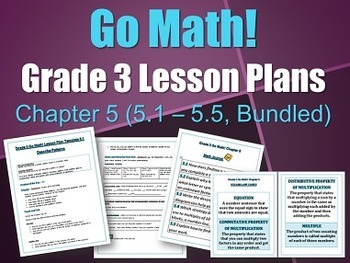Go Math Grade 3 Chapter 5 Lesson Plans 5.1-5.5 (Bundled)
- Zip
Description
UPDATED with the 2015-16 version of the Grade 3 Go-Math Program.
This Go-Math Grade 3 bundle covers all of Chapter 5: Lessons 5.1 - 5.5. Vocabulary cards and Math Journal topics are also included in the bundle.
Patterns
Find Unknown Factors
Problem Solving: Use the Distributive Property
Multiplication Strategies with Multiples of 10, and
Multiply Multiples of 10 by 1 Digit Numbers (Bundled).
To be used with the 'Go Math!' Program for Grade 3.
Like what you see? Looking to $AVE even MORE? Check out ourGo Math Grade 3 Chapter 1-12 Lesson Plans Mega Bundle for the entire year! Mega bundle includes all of the lessons, all of the vocabulary word wall posters, and our popular test prep packet!
You may also like: 3rd Grade Common Core Math Test Prep Packet (Short Answer & Extended Response Word Problems).
© Copyright MrTechnology, 2014-2016





